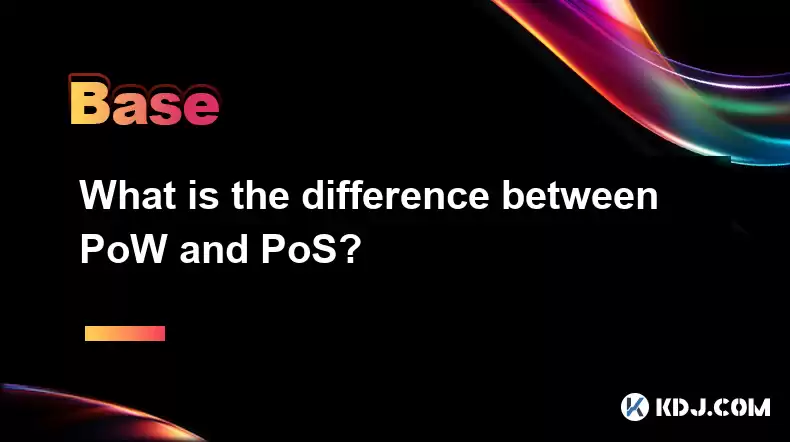-
 Bitcoin
Bitcoin $115100
1.27% -
 Ethereum
Ethereum $3675
2.71% -
 XRP
XRP $2.995
1.45% -
 Tether USDt
Tether USDt $1.000
0.02% -
 BNB
BNB $769.8
2.64% -
 Solana
Solana $168.0
3.25% -
 USDC
USDC $0.9999
-0.01% -
 TRON
TRON $0.3371
1.48% -
 Dogecoin
Dogecoin $0.2051
3.36% -
 Cardano
Cardano $0.7394
2.30% -
 Hyperliquid
Hyperliquid $38.15
0.42% -
 Stellar
Stellar $0.3966
-0.36% -
 Sui
Sui $3.486
2.93% -
 Chainlink
Chainlink $16.72
2.52% -
 Bitcoin Cash
Bitcoin Cash $568.0
4.36% -
 Hedera
Hedera $0.2440
2.59% -
 Ethena USDe
Ethena USDe $1.001
0.04% -
 Avalanche
Avalanche $22.16
2.06% -
 Litecoin
Litecoin $119.1
-0.73% -
 UNUS SED LEO
UNUS SED LEO $8.991
0.04% -
 Toncoin
Toncoin $3.232
-0.39% -
 Shiba Inu
Shiba Inu $0.00001233
2.82% -
 Uniswap
Uniswap $9.717
2.53% -
 Polkadot
Polkadot $3.664
1.85% -
 Dai
Dai $1.000
0.01% -
 Monero
Monero $281.2
-3.89% -
 Bitget Token
Bitget Token $4.350
1.55% -
 Cronos
Cronos $0.1428
5.07% -
 Pepe
Pepe $0.00001050
3.68% -
 Aave
Aave $262.3
3.54%
What is the difference between PoW and PoS?
Proof-of-Work (PoW) uses energy-intensive mining to validate transactions, while Proof-of-Stake (PoS) selects validators based on their cryptocurrency holdings, resulting in significantly lower energy consumption. PoW offers higher security, while PoS boasts greater scalability.
Mar 06, 2025 at 04:37 am

Key Points:
- Proof-of-Work (PoW): A consensus mechanism requiring miners to solve complex computational problems to validate transactions and add new blocks to the blockchain. This process consumes significant energy.
- Proof-of-Stake (PoS): A consensus mechanism where validators are chosen to create new blocks based on the amount of cryptocurrency they hold ("stake"). This is generally considered more energy-efficient than PoW.
- Key Differences: PoW relies on computational power, while PoS relies on staked cryptocurrency. PoW has higher security against 51% attacks due to the significant investment in hardware, but PoS offers higher transaction throughput and scalability.
- Environmental Impact: PoW's high energy consumption is a major concern, whereas PoS is significantly more environmentally friendly.
- Security and Decentralization: Both mechanisms offer varying levels of security and decentralization, with ongoing debates about their relative strengths and weaknesses.
What is the difference between PoW and PoS? This question delves into the fundamental differences between two dominant consensus mechanisms in the cryptocurrency world: Proof-of-Work (PoW) and Proof-of-Stake (PoS). Understanding these differences is crucial for navigating the complexities of the crypto landscape.
Proof-of-Work (PoW): The Energy-Intensive Approach
PoW, famously used by Bitcoin, relies on a competitive race amongst miners. Miners use powerful computers to solve complex cryptographic puzzles. The first miner to solve the puzzle gets to add the next block of transactions to the blockchain and receives a reward in cryptocurrency. This process requires vast computational power, leading to substantial energy consumption. The difficulty of the puzzles adjusts dynamically to maintain a consistent block creation rate.
The Mechanics of PoW
The process involves several steps:
- Miners receive pending transactions.
- Miners use specialized hardware (ASICs) to solve complex cryptographic hash functions.
- The first miner to find a solution adds the block to the blockchain.
- The network verifies the solution, and the miner receives a block reward.
The high energy consumption of PoW is a significant drawback, prompting the search for alternative consensus mechanisms.
Proof-of-Stake (PoS): A More Energy-Efficient Alternative
PoS offers a different approach to consensus. Instead of relying on computational power, PoS selects validators based on the amount of cryptocurrency they hold, known as "staking." Validators are chosen randomly, with the probability proportional to their stake. Selected validators propose and validate new blocks, receiving rewards for their participation.
Understanding the PoS Process
The PoS process generally follows these steps:
- Users stake their cryptocurrency to become validators.
- The network randomly selects validators based on their stake.
- Selected validators propose and validate new blocks.
- Validators receive rewards for their participation and penalties for malicious behavior.
PoS significantly reduces energy consumption compared to PoW because it eliminates the need for computationally intensive mining.
Comparing PoW and PoS: A Detailed Breakdown
The table below summarizes the key differences between PoW and PoS:
| Feature | Proof-of-Work (PoW) | Proof-of-Stake (PoS) |
|---|---|---|
| Consensus Method | Computational Power | Staked Cryptocurrency |
| Energy Consumption | Very High | Very Low |
| Security | High | Relatively High |
| Scalability | Low | High |
| Transaction Speed | Relatively Slow | Relatively Fast |
| Decentralization | Arguably Higher | Arguably Lower |
Security Considerations
PoW's security is largely derived from the significant energy investment required to attack the network. A 51% attack, where a single entity controls more than half the network's hashing power, becomes prohibitively expensive. PoS, while generally considered secure, faces different security challenges, including the potential for "nothing-at-stake" attacks and the concentration of stake in fewer hands, potentially leading to less decentralization.
Environmental Impact
The massive energy consumption of PoW is a major concern, contributing to carbon emissions. PoS, being significantly more energy-efficient, is seen as a more environmentally friendly alternative. The environmental impact of cryptocurrency is a subject of ongoing debate and research.
Scalability and Transaction Throughput
PoW's scalability is limited by the time it takes to validate transactions. PoS generally offers higher transaction throughput and faster confirmation times, making it more suitable for large-scale applications.
Decentralization Debate
The level of decentralization in both PoW and PoS systems is a subject of ongoing discussion. While PoW is often cited for its high decentralization due to the distributed nature of mining, concerns exist about the centralization of mining pools. PoS, while potentially less decentralized due to the concentration of staked coins, may offer a different type of decentralization based on the distribution of validators.
Frequently Asked Questions:
Q: Is PoS inherently more secure than PoW?
A: Both PoW and PoS offer different security models. PoW's security relies on the immense energy cost of attacking the network, while PoS's security depends on the economic incentives for validators to act honestly. Neither is definitively "more secure"; the relative security depends on the specific implementation and context.
Q: Which is better for the environment, PoW or PoS?
A: PoS is significantly more energy-efficient than PoW. PoW's high energy consumption is a major environmental concern, whereas PoS's energy usage is considerably lower.
Q: Can PoW be used for applications that require high transaction throughput?
A: PoW's limitations in transaction throughput make it less suitable for applications demanding high speeds and scalability. While layer-2 solutions can improve PoW's scalability, they introduce additional complexities.
Q: Are there any hybrid consensus mechanisms combining elements of PoW and PoS?
A: Yes, several cryptocurrencies employ hybrid consensus mechanisms that combine aspects of both PoW and PoS, aiming to leverage the strengths of both approaches while mitigating their weaknesses. These often involve a transition phase or a combination of different consensus algorithms within the same blockchain.
Q: What are the risks associated with staking in a PoS system?
A: Risks associated with staking include the possibility of validator slashing (losing staked coins due to malicious behavior), the risk of smart contract vulnerabilities, and the potential loss of value in the staked cryptocurrency. Choosing reputable and well-established PoS networks is crucial to mitigate these risks.
Disclaimer:info@kdj.com
The information provided is not trading advice. kdj.com does not assume any responsibility for any investments made based on the information provided in this article. Cryptocurrencies are highly volatile and it is highly recommended that you invest with caution after thorough research!
If you believe that the content used on this website infringes your copyright, please contact us immediately (info@kdj.com) and we will delete it promptly.
- Fireverse Token: Igniting a Musical Revolution in Web3
- 2025-08-07 08:27:45
- Ethereum, L2 Withdrawals, and Decentralization: A New Yorker's Take
- 2025-08-07 08:32:33
- Avalanche vs. Ruvi AI: Daily Sales Tell a Story of Crypto Disruption
- 2025-08-07 06:29:35
- DeSoc: The Crypto to Buy Now for a Decentralized Future (and Maybe 43x Gains!)
- 2025-08-07 06:50:16
- Arctic Pablo Coin: Riding the Meme Coin Wave with a Deflationary Twist
- 2025-08-07 07:18:13
- XRP Price Skyrocket? Decoding the Cryptocurrency's Next Move
- 2025-08-07 07:31:50
Related knowledge

What is the difference between CeFi and DeFi?
Jul 22,2025 at 12:28am
Understanding CeFi and DeFiIn the world of cryptocurrency, CeFi (Centralized Finance) and DeFi (Decentralized Finance) represent two distinct financia...

How to qualify for potential crypto airdrops?
Jul 23,2025 at 06:49am
Understanding What Crypto Airdrops AreCrypto airdrops refer to the distribution of free tokens or coins to a large number of wallet addresses, often u...

What is a crypto "airdrop farmer"?
Jul 24,2025 at 10:22pm
Understanding the Role of a Crypto 'Airdrop Farmer'A crypto 'airdrop farmer' refers to an individual who actively participates in cryptocurrency airdr...

What is the difference between a sidechain and a Layer 2?
Jul 20,2025 at 11:35pm
Understanding the Concept of SidechainsA sidechain is a separate blockchain that runs parallel to the main blockchain, typically the mainnet of a cryp...

What is the Inter-Blockchain Communication Protocol (IBC)?
Jul 19,2025 at 10:43am
Understanding the Inter-Blockchain Communication Protocol (IBC)The Inter-Blockchain Communication Protocol (IBC) is a cross-chain communication protoc...

How does sharding improve scalability?
Jul 20,2025 at 01:21am
Understanding Sharding in BlockchainSharding is a database partitioning technique that is increasingly being adopted in blockchain technology to enhan...

What is the difference between CeFi and DeFi?
Jul 22,2025 at 12:28am
Understanding CeFi and DeFiIn the world of cryptocurrency, CeFi (Centralized Finance) and DeFi (Decentralized Finance) represent two distinct financia...

How to qualify for potential crypto airdrops?
Jul 23,2025 at 06:49am
Understanding What Crypto Airdrops AreCrypto airdrops refer to the distribution of free tokens or coins to a large number of wallet addresses, often u...

What is a crypto "airdrop farmer"?
Jul 24,2025 at 10:22pm
Understanding the Role of a Crypto 'Airdrop Farmer'A crypto 'airdrop farmer' refers to an individual who actively participates in cryptocurrency airdr...

What is the difference between a sidechain and a Layer 2?
Jul 20,2025 at 11:35pm
Understanding the Concept of SidechainsA sidechain is a separate blockchain that runs parallel to the main blockchain, typically the mainnet of a cryp...

What is the Inter-Blockchain Communication Protocol (IBC)?
Jul 19,2025 at 10:43am
Understanding the Inter-Blockchain Communication Protocol (IBC)The Inter-Blockchain Communication Protocol (IBC) is a cross-chain communication protoc...

How does sharding improve scalability?
Jul 20,2025 at 01:21am
Understanding Sharding in BlockchainSharding is a database partitioning technique that is increasingly being adopted in blockchain technology to enhan...
See all articles

























































































